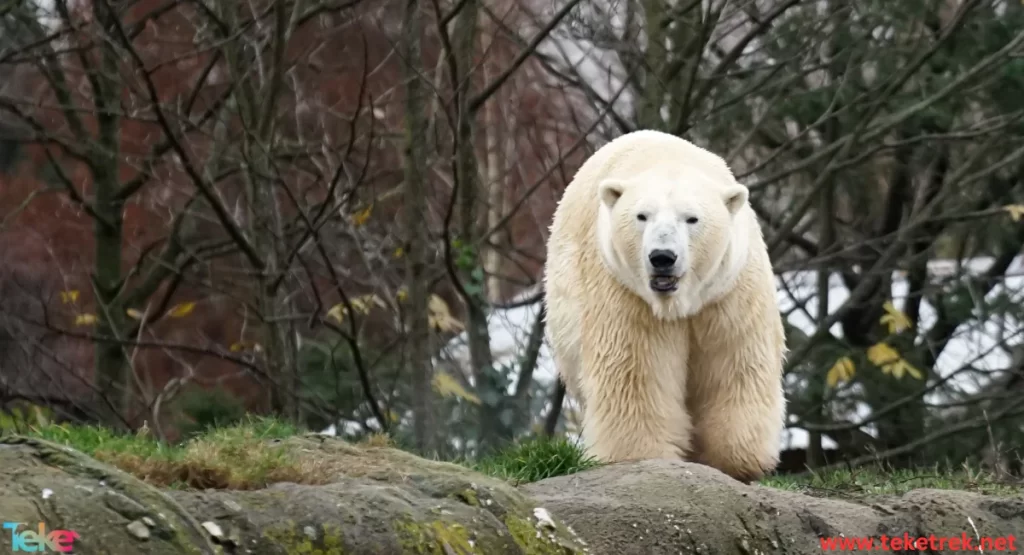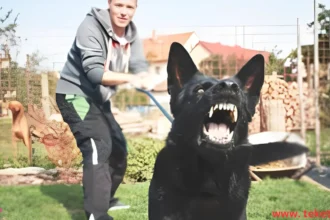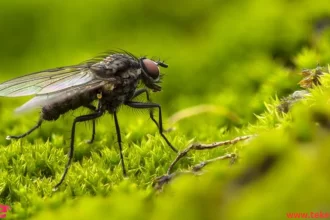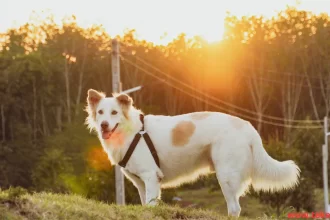The polar bear, also known as the “white bear,” is the largest land carnivore in the bear family and the largest living creature in polar regions. The polar bear is considered an icon of the polar region, characterized by its massive body and dense white fur, which helps it adapt to its harsh environment. Polar bears live in the Arctic region and specialize in hunting and surviving in harsh icy conditions. Below, on the Teketrek website, we will discuss more details about the life, behavior, and diet of the polar bear.
Specifications and appearance
The polar bear is verberate animal possesses a set of characteristics and features that distinguish it from other bears and enable it to adapt to its harsh polar environment. Among these characteristics and features:
1. The polar bear is characterized by dense white fur that protects against extremely low temperatures in its polar environment.
2. The polar bear is the largest of all bears and the largest land carnivore in the world, weighing up to about 700 kilograms and measuring up to about 3 meters in length.
3. It has small ears and a short tail relative to its massive body size, helping to reduce heat loss in the polar environment.

4. The polar bear possesses fat pads under the skin that provide additional insulation and energy storage in harsh weather conditions.
5. It has a black nose and long claws that aid in foraging for food and navigating on snow and ice.
6. The polar bear is a skilled swimmer, with its massive body capable of swimming long distances in cold polar waters.
7. A polar bear can live up to 25-30 years in the wild, which is a long lifespan compared to many other mammals.
Naming
- The polar bear has been known by various names in northern cultures for thousands of years, and later acquired names from scientists and explorers such as the polar bear or sea bear.
- Then, Captain C.J. Phipps used the term “polar bear” in 1774, reflecting the animal’s close association with the cold waters and sea ice of the Arctic. The scientific name Thalarctos, a blend of the Greek words thalasso (sea) and arctos (bear) was later accepted.
- However, polar bear scientists reverted to the original scientific name Ursus maritimus in 1971.
Lifestyle
- Polar bears have adapted over time to hunting seals and surviving in the cold, spreading across the North. Consequently, their bodies are perfectly suited to seasonal changes in the Arctic, from top to bottom.
Habitat of the polar bear
- The polar bear lives in the sea ice of the Arctic, where it hunts seals from ice floes.
- Polar bears are found in five states: the United States (Alaska), Canada, Russia, Greenland, and Norway (Svalbard).
Polar bear food
The polar bear is Carnivora animal adapted to thrive on a diet rich in fats without suffering from heart damage. It has evolved to prey on ringed and bearded seals, which it hunts from the sea ice platform. Here’s how polar bears hunt seals:
1. Polar bears often wait for seals to surface for air at their breathing holes. Using their powerful sense of smell, they locate the seals and wait for them to appear.
2. Polar bears also chase after seals that bask on the ice, taking advantage of their sleep-wake rhythms.
3. Once a seal is spotted, the polar bear slowly approaches and freezes in place when the seal raises its head. Positioned about 6 meters away from the seal, the bear then utilizes its explosive speed to lunge forward and kill the seal before it can escape back into the sea.
In addition to seals, polar bears also consume fish and other marine mammals such as small fish, octopus, and giant squid.
Reproduction
- Male polar bears search for females between April and late June on the sea ice, following scent trails left by mating platforms. Mating occurs on the sea ice, but fertilization of the eggs doesn’t happen until the fall when the female has accumulated enough fat reserves to sustain herself and her cubs during the long denning period.
- After mating, adult males remain with the female for a few days before venturing off on their own.
- Following feeding during the summer and fall seasons and gaining as much weight as possible, pregnant females prepare to enter maternity dens to give birth to their cubs. The female digs a small snow den in a snowdrift, large enough to turn around in, then waits for the snow to close the entrance tunnel, completely concealing the den under the snow.
- Polar bear cubs are born in December, typically numbering between 1-3 cubs. They remain in the den until spring, when the mother abstains from eating or drinking, solely dedicated to caring for her cubs.
Polar bear baby
- Newborn polar bear cubs rely entirely on their mothers as they are born blind, toothless, and covered in soft white fur. They weigh just over half a kilogram (1 pound) and measure only 30-35 cm in length. The cubs grow rapidly on their mother’s rich, fatty milk, nursing for about 20 months.
- Polar bear families typically emerge from their dens in March or April when the cubs are strong enough to survive in the harsh conditions of the Arctic and embark on the journey to the sea ice.
- After emerging, the mother teaches her cubs how to forage for food and the ways of life.

Polar bear behaviors and habits
Polar bears learn how to live, sleep, communicate with each other, and clean themselves:
Walking:
- Polar bears suffer more from overheating than from cold, so they walk slowly. They can run short distances, but their body temperature rises quickly.
Sleeping:
- Polar bears sleep for 7 to 8 continuous hours and take naps, dozing off anywhere and anytime, especially after feeding on seals. Napping helps them conserve energy, as their entire existence revolves around hunting, eating, and conserving energy.
- In winter, polar bears sleep in shallow dens they dig in the snow, with their sides or backs facing the wind. They also sleep during snowstorms, with snow accumulating over them like a blanket, and sometimes they stay curled up under the snow for several days until the storm passes.
- In summer, polar bears lounge on sea ice, using a chunk of ice or their paws as a pillow. Non-coastal polar bears sleep on the tundra plains or dig sleeping pits in sand or gravel-lined hills along the beach.
Cleaning:
- Polar bears like cleanliness and dryness because dirty, wet fur is considered poor insulation. After nursing, a polar bear heads to open water and spends about 15 minutes bathing and licking its paws, chest, and nose, then it shakes off excess water and rubs its fur in the snow to dry.
- In winter, polar bears clean themselves with snow and water when available. They rub their heads in the snow, push forward on their bellies, and roll on their backs.
- The mother licks her cubs to keep them clean, and the cubs lick themselves and each other.
Communication Between Polar Bears:
- Polar bears communicate with each other using body language, sounds, and scent marks as follows:
- Nodding from side to side: Indicates a desire to play. Playful polar bears start by standing on their hind legs, lowering their chin to their chests, with their front paws hanging on their sides.
- Nose-to-nose greeting: A bear requests something from another, such as food. The visiting bear approaches slowly, circles around the prey, and then humbly touches the nose of the bear that feeds it.
Chuffing: A vocal response to stress released by a mother bear when she feels anxious about the safety of her cubs.
Scolding: A mother carrying her cubs with a low grumble or a gentle slap.
Rushing: When a male approaches a female with cubs, she rushes towards him, lowering her head.
Huffing, snorting, and lowering the head: Indicates aggression.
Roaring or growling loudly: Expresses anger.
Deep growl: Warns, possibly defending food.
Charging forward, with the head down and ears back: When in an attacking position.
Moving in the direction of the wind for submissive polar bears: Indicates surrender.
Sounds of cubs
- Distress: Cubs scream and cry when they feel distressed.
- Discomfort: Cubs sigh when they lose the nipple or feel uncomfortable.
- Contentment: Cubs make sounds including “uhs” and “ums” when they feel content.
- Suckling attempt: Polar bear cubs emit a “whining” sound when attempting to suckle.
Mother’s voices
Rest: The mother polar bear snores to indicate her relaxation.
Stress: Signs of stress include panting, heavy breathing, and grunting.
Grooming: Licking sounds are heard when the mother takes care of herself or her cubs, indicating relaxation.
FAQ
- Is the polar bear a pet or a predator?
The polar bear is a predatory animal and can kill an adult walrus.
- What distinguishes a polar bear?
It is distinguished by its long neck and large body.
- What is the cause of the polar bear’s extinction?
As a result of climate changes, which reduces the amount of ice.
- How does a polar bear live?
The male lives for 25 years, while the female reaches her twenties. He relies on a developed sense of smell to hunt.
- Where polar bears live?
It lives in the Arctic regions, including Canada, Russia, and Norway.
- Are polar bears the biggest bear?
Yes, polar bears are the biggest bear.
- Is polar bear called Ice Bear?
Yes, the polar bear called Ice bear.
In summary, the polar bear is a carnivorous mammals that feeds on seals, prefers cold climates, and suffers from high temperatures.






